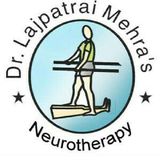

Introduction Arthritis is disease of joints (inflammation of joints). There are many types of arthritis. Types of Arthritis are: Osteoarthritis: It is often related to aging or to an injury.Rheumatoid arthritis: It is the most common form of arthritis.Juvenile rheumatoid arthritis: It is a form of the disease that occurs in children.Infectious arthritis: It is an infection that has spread from another part of the body to the joint.Gout: It is Inflammation of joints. The major complaint of individual is pain in joints which is localized and is often consistent. The pain from arthritis is due to inflammation that occurs around the joint, damage to the joint from disease daily wear and tear of joint, muscle strains caused by forceful movements against stiff painful joints and fatigue. Symptoms The commonest symptoms involve joints. Joint pain and stiffness is common feature along with swelling of joints. Arthritic disorders like lupus and rheumatoid can also affect other organs in the body with a variety of symptoms. Difficulty to walkMalaise and a feeling of tirednessWeight lossPoor sleepMuscle aches and painsTendernessDifficulty moving the joint Causes When inflammation occurs, chemicals from the body are released into the blood or affected tissues. This release of chemicals increases the blood flow to the area of injury or infection and may result in redness and warmth. Some of the chemicals cause a leak of fluid into the tissues, resulting in swelling. This process may stimulate nerves and cause pain. Diagnosis Physical Examination: Physician will check for limited range of motion in the joint, the feeling of fluid around joints, or warm or red joints.Blood test: This is generally done for rheumatoid arthritis.Rheumatoid factor (RF): It is checked for rheumatoid arthritis. However, RF can also be found in people without RA or with other autoimmune disorders. In general, if no rheumatoid factor is present in someone with RA, the course of the disease is less severe.Levels of ESR (erythrocyte sedimentation rate) and C-reactive protein (CRP) levels: These are also increased. Both CRP and ESR levels are used to check disease activity and also to monitor how well someone is responding to treatment.Imaging scans: Like X-ray, CT scans and MRI are commonly used to get the image of bones and cartilage so that doctor can better determine if it is arthritis or not. Management Physical exercise: During pain exercise seems to be the last option but muscle strengthening and stretching exercises have proved to be very helpful. To relieve pain: Pain relievers like NSAIDs (non-steroidal anti inflammatory drugs). NSAIDs generally interfere with chemicals called prostaglandins in the body, which trigger pain, inflammation, and fever. They are very helpful in relieving pain in all forms of arthritis. Surgery: Joint replacement surgery is often performed for those who are not able to walk or has lots of difficulty in walking. Disease-modifying anti rheumatic drugs (DMARDs): Often used to treat rheumatoid arthritis, DMARDs slow or stop immune system that attack joints. Examples include methotrexate (Trexall) and hydroxychloroquine (Plaquenil). Intra-articular injection: It is a procedure used in the treatment of inflammatory joint conditions, such as rheumatoid arthritis, psoriatic arthritis, gout, tendinitis, bursitis and occasionally osteoarthritis. A hypodermic needle is injected into the affected joint where it delivers a dose of any one of many anti-inflammatory agents, the most common of which are corticosteroids.
Living with Lupus is often a battle not just against the illness itself, but also against the emotional weight of uncertainty, fatigue, and the toll of long-term medications. For one courageous woman, that battle began in 2013. Diagnosed after Lupus had already affected her joints and internal organs, she was quickly placed on medication that initially helped. But as time went on, her health declined again this time with more frequent flare-ups and increasingly difficult side effects. Like many others with chronic illness, she faced the crushing weight of hopelessness. Each day became harder than the last, and conventional treatments no longer offered the comfort they once did. But in March 2020, at her lowest point, she made a decision that changed everything.Out of desperation and with a healthy dose of skepticism she turned to NaturePath Herbal Clinic, hoping their natural Lupus treatment might offer at least some relief. What happened next went far beyond her expectations.After completing a six-month herbal program, her flare-ups stopped entirely. Her energy returned. The chronic pain that had defined her daily life began to fade. For the first time in years, she felt like herself again. Not just alive but truly living.Her story is not just one of healing; it’s one of resilience, open-mindedness, and the courage to try something new when all else fails. By sharing her journey, she hopes to offer something priceless to others living with Lupus: hope.This treatment has been a true breakthrough for her. If you’re searching for a safe, natural, and effective alternative, I genuinely recommend giving this a chance.”www.naturepathherbalclinic.com or email them at info@naturepathherbalclinic.com



